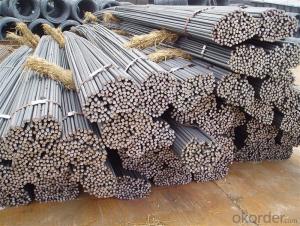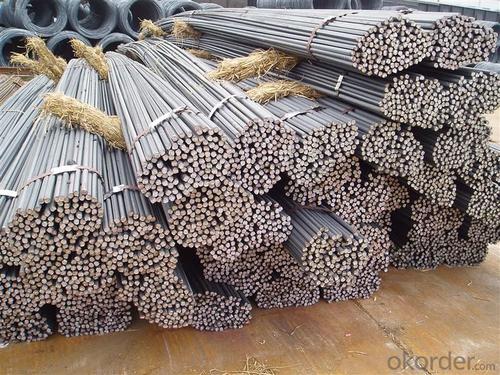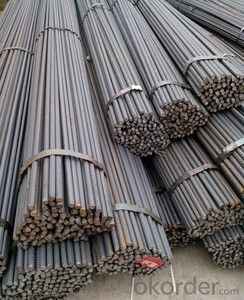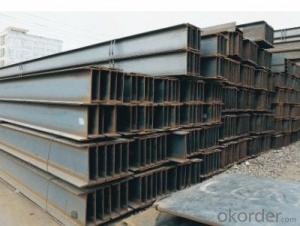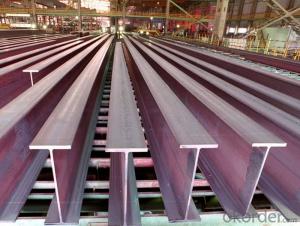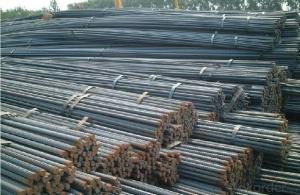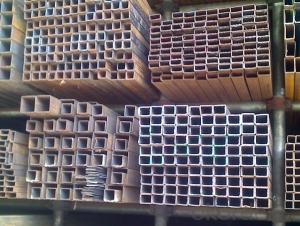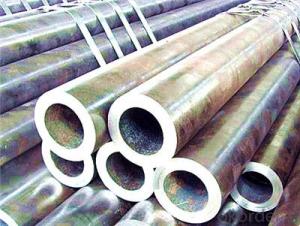Maanshan Steel Pipe Made in China on Sale
- Loading Port:
- Tianjin
- Payment Terms:
- TT OR LC
- Min Order Qty:
- 100 PCS
- Supply Capability:
- 1000 PCS/month
OKorder Service Pledge
OKorder Financial Service
You Might Also Like
1.Packaging & Delivery
Packaging Detail: | Part Name:Malleable Cast Iron Pipe Fitting Brand Name:Fengyuan Malleable Cast Iron Pipe Fitting Model No.:Fyzz0030 QTY Of Each Carton: 65 Pieces (According To The Weight and Volume Of Many Kinds Of Products)Weight:28KG (Various Types May Get Different Weights) Size:68*48*30mm CBM:0.1Stere Per Carton H.S Code:8708949090 (Various Parts Get Different Codes) Parts Or Not:Spare Parts Container Information:40 Or 20 Inch Container (According To The Require Of Customer) Pallet Or Not:All Parts Pallet-Load According |
Delivery Detail: | For Samples:7-10Days;For Mass Production:10-20 Days |
2.Specifications
malleable cast iron pipe fitting
1.casting part
2.malleable cast iron pipe fitting
3.annual casting 550000MT
4.ISO9001:2008
3.Product information:
Brand Name | Malleable Cast Iron Pipe Fitting |
Material | Standard material according to technical drawing, like Stainless steel, Alloy steel, Carbon steel, Aluminum etc |
Material Standard | We could produce as your requirements |
Quality control | ISO9001:2008 control |
QC System | 100% inspection before shipment |
Applied Software for Specification drawings | JPEG, PDF, CAD, IGS Accepted |
Precision machining | CNC machining, milling machine, drilling machine, numerical lathe, all types of lathe |
Payment Terms | L/C,D/A,D/P,T/T,Western Union,MoneyGram.Various options to make payment more convenient |
Surface Treatment | polishing, sand blasting, heat treatment, painting, powder coating, anodizing,electroplating, mirror polishing |
Our services | CNC Machining, Turning, Milling, Stamping, Casting, finish,packing. |
Application | Valves, auto parts, motorcycle parts, metal products for daily use, plumbing pipe fittings |
Product's Design And Products Assembly | As per client's drawing or sample , besides we are also experienced in products assembly. |
Competitive advantage | 1. Small quantity order acceptable. 2. Very tight tolerance. 3. Advanced equipment, excellent R&D teams 4. Strict quality control system. 5. Professional technics and rich experience 6. Packaging details as client required |
Main Products | machining parts, stamping parts,casting parts |
R&D | We have professional engineers and technical workers who are specialized in developing new products . Professional tooling development & process & design,At least 60 kinds of new parts are developed according to customer's drawings each year. |
Customized Service | Able to produce according to specification with technical drawing .Also, we can design for you |
4.Malleable Cast Iron Pipe Fitting Equipment display:
Process Facilities | Quantity |
CNC Machine | 15sets |
Lathe Machine | 5 sets |
Instrument lathe | 28 sets |
Centerless Grinding Machine | 1 set |
Surface Grinding Machine | 2 sets |
Drilling Machine | 3 sets |
Milling Machine | 3 sets |
Drilling And Milling Machine | 2 sets |
Tapping Machine | 14 sets |
Punching Machine | 10 sets |
Four Column Hydraulic Press | 1 set |
Digital Electronic Ac Arc Welder | 2 sets |
Hanging Type Cleaning Machine | 1 set |
Horizontal cold chamber die casting machine | 2 sets |
Aluminum alloy die casting machine | 5 sets |
5.Malleable Cast Iron Pipe Fitting Testing Equipments:
equipment | Quantity |
Micrometer | 1 set |
Height gage | 1 set |
Two meters vernier caliper | 1 set |
General gage | 100 sets |
Two dimensional imaging instrument | 1 set |
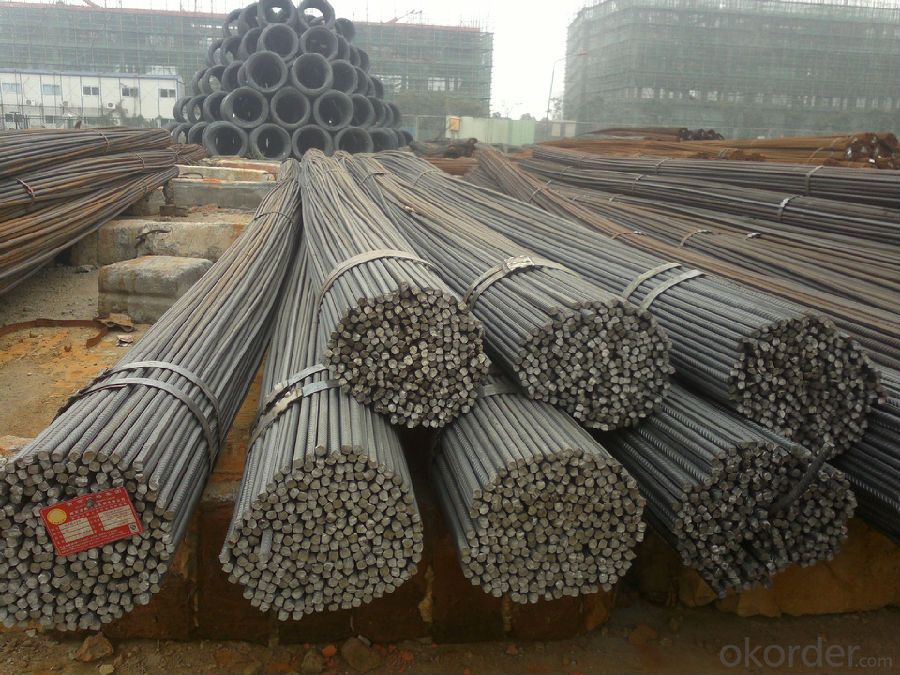
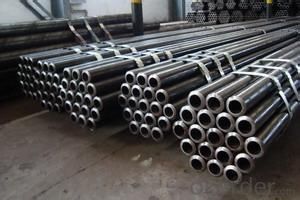
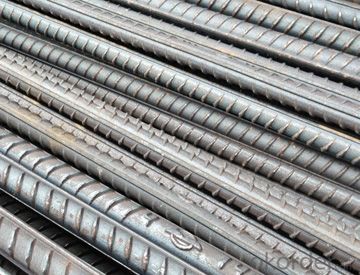
- Q: What is the difference between carbon steel and cast iron pipes?
- Carbon steel and cast iron pipes are both widely used in various industries for different applications. The main difference between these two types of pipes lies in their composition and properties. 1. Composition: Carbon steel pipes are primarily made of iron and carbon, with trace amounts of other elements such as manganese, phosphorus, and sulfur. On the other hand, cast iron pipes are made by melting iron and adding a small amount of carbon, usually between 2-4%. 2. Strength and Durability: Carbon steel pipes are generally stronger and more durable than cast iron pipes. Carbon steel has a higher tensile strength, which means it can withstand higher pressures and is less likely to be damaged or deformed. Cast iron, although strong, is more brittle and prone to cracking. 3. Corrosion Resistance: Carbon steel pipes require additional coatings or treatments to protect them from corrosion. Without proper protection, carbon steel pipes can be susceptible to rust and corrosion, especially when exposed to moisture or aggressive substances. On the other hand, cast iron pipes have inherent corrosion resistance due to the formation of a protective layer of iron oxide (rust) on their surface. 4. Weight and Installation: Cast iron pipes are typically heavier than carbon steel pipes, making them more challenging to handle and install. Carbon steel pipes are comparatively lighter, allowing for easier transportation and installation. 5. Noise and Vibration: Cast iron pipes have superior sound-deadening properties, making them quieter when fluids flow through them. On the contrary, carbon steel pipes tend to transmit more noise and vibrations. 6. Cost: Cast iron pipes are generally more expensive than carbon steel pipes due to the additional manufacturing processes and the higher cost of raw materials. In summary, the main differences between carbon steel and cast iron pipes lie in their composition, strength, corrosion resistance, weight, noise transmission, and cost. The choice between the two depends on the specific application, budget, and environmental factors.
- Q: Are steel pipes affected by magnetic fields?
- Yes, steel pipes can be affected by magnetic fields. Steel is a ferromagnetic material, which means it can be magnetized and influenced by magnetic fields.
- Q: What is the purpose of pipe flanges in steel pipes?
- The purpose of pipe flanges in steel pipes is to provide a secure and leak-proof connection between two pipes or fittings. Flanges act as a connection point, allowing easy assembly and disassembly of pipes while ensuring a tight seal to prevent any leakage or loss of fluid or gas.
- Q: What is the difference between steel pipe and copper pipe?
- The main difference between steel pipe and copper pipe lies in their material composition. Steel pipe is made of steel, while copper pipe is made of copper. Steel pipe is stronger and more durable, making it suitable for high-pressure and heavy-duty applications. On the other hand, copper pipe is more malleable and corrosion-resistant, making it ideal for plumbing and water supply systems. Additionally, copper pipe is more expensive than steel pipe but offers better heat conductivity, making it suitable for heating and cooling applications.
- Q: How are steel pipes used in the oil and gas pipeline transportation?
- Due to their durability, strength, and resistance to corrosion, steel pipes find extensive use in the oil and gas industry for pipeline transportation. Specifically designed to withstand high pressure and transport various fluids, including crude oil, natural gas, and refined petroleum products, these pipes serve three main purposes in the industry: gathering, transmission, and distribution. Gathering pipelines collect oil and gas from production wells and transport them to processing facilities. Steel pipes are chosen for their ability to endure harsh conditions at extraction sites and effectively transport fluids across long distances. Transmission pipelines, on the other hand, transport oil and gas across vast distances, even spanning countries or continents. Steel pipes are perfect for this task, excelling in handling high pressure and ensuring the efficient flow of fluids over extended distances. To safeguard against external elements and minimize damage risks, these pipes are often buried underground or submerged in water. Distribution pipelines deliver oil and gas to end-users, such as homes, businesses, and industrial facilities. Steel pipes are frequently employed in these pipelines due to their capability to handle varying demand and pressure requirements of different consumers. Though smaller in diameter compared to transmission pipelines, they still provide reliable and safe transportation of oil and gas to their final destinations. Besides their strength and durability, steel pipes used in oil and gas pipeline transportation are coated or lined with different materials to enhance corrosion resistance and reduce the risk of leaks. These protective coatings and linings ensure the pipes' longevity and preserve the integrity of the transported fluids. In summary, steel pipes play a vital role in the oil and gas industry by providing a dependable and efficient means of transporting oil and gas from production sites to processing facilities and ultimately to end-users. Their durability, strength, and resistance to corrosion make them an ideal choice for pipeline transportation in this industry.
- Q: What are the different methods of threading steel pipes?
- There are several methods for threading steel pipes, including manual threading using a handheld pipe threader, mechanical threading using a powered threading machine, and hydraulic threading using a hydraulic pipe threader. Additionally, some steel pipes can also be threaded using a die head or a threading lathe.
- Q: How are steel pipes used in the manufacturing of bridges?
- Steel pipes are commonly used in the manufacturing of bridges as they provide structural support and stability. They are used for various purposes such as creating the framework, supporting the weight of the bridge, and constructing the foundations. Additionally, steel pipes are also used in the construction of bridge railings and barriers, ensuring safety for pedestrians and vehicles.
- Q: How do you calculate the pipe pressure loss coefficient for steel pipes?
- To determine the pressure loss coefficient for steel pipes, one can utilize the widely accepted Darcy-Weisbach equation. This equation calculates the pressure loss in pipes caused by friction. It can be represented as follows: ΔP = f × (L/D) × (V^2/2g) In this equation: - ΔP represents the pressure loss in units of pressure, such as psi or Pa. - f denotes the Darcy friction factor, a dimensionless value. - L signifies the pipe length in units of length, such as feet or meters. - D represents the pipe diameter in units of length, such as feet or meters. - V indicates the fluid velocity flowing through the pipe in units of velocity, such as ft/s or m/s. - g represents the acceleration due to gravity in units of acceleration, such as ft/s² or m/s². The Darcy friction factor (f) is a dimensionless parameter that quantifies the amount of frictional resistance in the pipe. For steel pipes, this factor can be determined using the Moody diagram. The Moody diagram presents a graphical relationship between the Reynolds number (Re) and the friction factor (f) for various pipe roughness values. To calculate the pressure loss coefficient, one should find the friction factor (f) value based on the Reynolds number (Re) and the relative roughness of the steel pipe (ε/D). The Reynolds number is calculated as follows: Re = (ρ × V × D) / μ In this equation: - ρ represents the fluid density in units of mass per unit volume, such as lb/ft³ or kg/m³. - V denotes the fluid velocity in units of velocity, such as ft/s or m/s. - D signifies the pipe diameter in units of length, such as feet or meters. - μ represents the dynamic viscosity of the fluid in units of force per unit area per unit time, such as lb/ft·s or kg/m·s. Once the Reynolds number (Re) and the relative roughness (ε/D) are determined, one can refer to the Moody diagram to find the corresponding friction factor (f). The pressure loss coefficient (K) can then be calculated using the following formula: K = f × (L/D) In this equation: - L represents the pipe length in units of length, such as feet or meters. - D denotes the pipe diameter in units of length, such as feet or meters. By utilizing the Darcy-Weisbach equation and the Moody diagram, one can accurately calculate the pressure loss coefficient for steel pipes. This calculation is crucial for the design and analysis of fluid flow systems.
- Q: How do steel pipes handle thermal expansion?
- Steel pipes handle thermal expansion by expanding and contracting with changes in temperature. The high thermal conductivity of steel allows it to transfer heat quickly, preventing excessive expansion. Additionally, the flexibility of steel allows it to absorb the expansion and contraction without compromising the integrity of the pipe.
- Q: Are steel pipes suitable for use in mining applications?
- Yes, steel pipes are highly suitable for use in mining applications. Steel pipes offer excellent durability, strength, and resistance to corrosion, making them ideal for transporting various materials, such as water, gases, and minerals, in mining operations. Additionally, steel pipes can withstand high pressure and extreme temperatures, ensuring their reliability and longevity in demanding mining environments.
Send your message to us
Maanshan Steel Pipe Made in China on Sale
- Loading Port:
- Tianjin
- Payment Terms:
- TT OR LC
- Min Order Qty:
- 100 PCS
- Supply Capability:
- 1000 PCS/month
OKorder Service Pledge
OKorder Financial Service
Similar products
Hot products
Hot Searches
Related keywords
